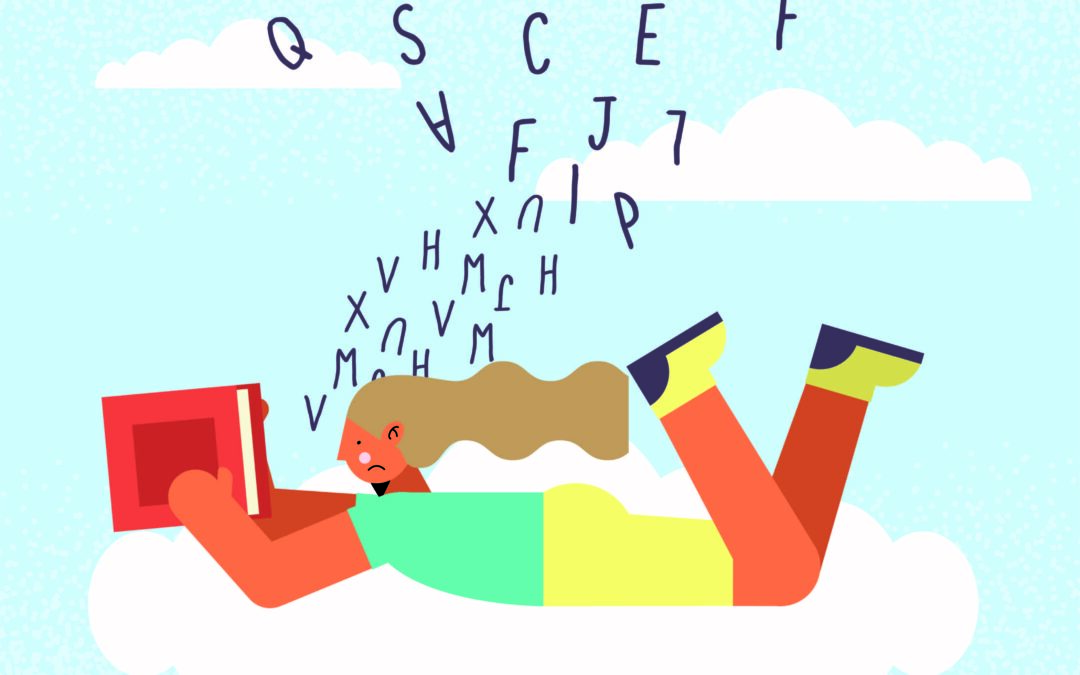Sara Flanagan, Ph.D., Assistant Professor of Special Education
Rachel Brown-Chidsey, Ph.D., NCSP, Assistant Professor of Special Education, University of Southern Maine
Dyslexia is a language-based learning disability leading to difficulties learning and processing language, including reading; it is the most common type of learning disability, impacting around 15% of students. Reading difficulties start with phonological awareness (e.g., a student hears a word and says the first sound). Other areas impacted include phonics and decoding with reading print to reading comprehension and vocabulary. These difficulties lead to challenges in other areas like math and social studies (see Table 1 for resources; APA, 2022; IDA, 2020).
What dyslexia is not
Dyslexia cannot be cured; it is a lifelong disorder that impacts each student differently. Students with dyslexia typically have a normal IQ, and students can learn and meet their goals. With effective intervention and instruction, students can develop reading and literacy skills to the best of their abilities (see Table 2 for more information; Gaab Lab, n.d.; IDA, 2020).
Dyslexia is not related to how eyes see letters or words, including backwards or upside down. Difficulties reading are due to how students’ brains process language. Students may skip lines and words when reading due to the different simultaneous skills needed to read a word (e.g., identifying letter-sounds, combining those to read a word). Students will not catch up in reading or other academic areas on their own. Colored overlays and fonts are not effective; instead, systematic, explicit instruction is key (Flanagan & Gabrielli, 2022; Gaab Lab, n.d.; IDA, 2020). Not all students who struggle to read have dyslexia. For example, a common developmental milestone is transposing letters when learning to read. Students without dyslexia may experience difficulties learning to read; dyslexia has specific “red flags.”
What are “red flags” and how do you screen for dyslexia?
Although formal diagnosis of dyslexia requires a comprehensive evaluation, there are indicators that teachers may see. Screening tools indicate if a student has dyslexia risk factors as early as kindergarten (see Table 3 for possible indicators of dyslexia; IDA, 2022). If a kindergarten student has persistent difficulties learning letter names and sounds, it might signal a risk for dyslexia. For students in grades 1 and above, very slow reading, below grade reading, and poor spelling are additional indicators.
These indicators do not automatically mean that a student has dyslexia because there are other reasons why a student might struggle with reading (Middleton et al., 2022). For example, if a student has limited prior exposure to books or if a student has not attended school regularly, these might lead to reading delays (Barnes & Peltier, 2022). Teachers must support all students who struggle with reading, but to do so effectively, it helps to know why students struggle. The good news is that there are brief and effective screening tools that help teachers learn whether a student shows possible signs of dyslexia and reading needs (Burns et al., 2022; Edwards et al., 2022).
Dyslexia screeners measure a student’s knowledge of sounds and symbols involved in reading (Daniel et al., 2022). Universal screening of all students in early grades (i.e., K-3) allows teachers to learn which students are on track for reading success and which might need additional intervention. Screeners can be a component of a multi-tiered system of support (MTSS) by providing data on a student’s reading (Middleton et al., 2022). Tiered interventions in MTSS can help teachers determine if a student’s reading problems are due to limited instruction or potential dyslexia. Progress monitoring data collected is helpful for identifying if a student’s reading improvements are typical for the grade or much slower. When a student makes slow reading progress, despite evidence-based reading instruction, it can be another indicator of dyslexia.
How do students with dyslexia receive school-based services?
Students with potential dyslexia and who are not making progress with evidence-based intervention can be referred for special education. In 2015, the U.S. Department of Education Office of Special Education Programs (OSEP) clarified that students with dyslexia are eligible for special education under specific learning disability (USDOE, 2015). OSEP affirmed that schools can and should use the term “dyslexia” and engage in efforts to identify and support students.
Although students with dyslexia often require additional intervention, research indicates that they benefit from general reading instruction based on the science of reading (SOR). SOR refers to research documenting the most effective reading instruction includes direct, explicit, and systematic instruction (The Reading League, n.d.). All students benefit from the SOR, and it is strongly recommended as the basis for Tier 1, core general education reading instruction.
References
American Psychiatric Association (APA). (2022). What is a specific learning disorder? https://www.psychiatry.org/patients-families/specific-learning-disorder/what-is-specific-learning-disorder
Barnes, Z. T., & Peltier, T. K. (2022). Translating the science of reading screening into practice: Policies and their implications. Perspectives on Language and Literacy, 48(1), 38-44.
Burns, M. K., VanDerHeyden, A. M., Duesenberg-Marshall, M. D., Romero, M. E., Stevens, M.A., Izumi, J. T., & McCollom, E. M. (2022). Decision accuracy of commonly used dyslexia screeners among students who are potentially at-risk for reading difficulties. Learning Disability Quarterly, 73194872210966. https://doi.org/10.1177/07319487221096684
Daniel, J., Vaughn, S., Roberts, G., & Grills, A. (2022). The importance of baseline word reading skills in examining student response to a multicomponent reading intervention. Journal of Learning Disabilities, 55(4), 259-271. https://doi.org/10.1177/00222194211010349
Edwards, A., van Dijk, W., White, C., & Schatschneider, C. (2022). Screening screeners: Calculating classification indices using correlations and cut-points. Annals of Dyslexia, 72(3), 445-460. https://doi.org/10.1007/s11881-022-00261-5
Flanagan, S., & Gabrielli, D. (2022). Ineffective reading instructional practices and what to do instead for all students. Maine Educator. https://maineea.org/maineeducatoronline/summer-22/ineffective-reading-instructional-practices-and-what-to-do-instead-for-all-students/
Gaab Lab. (n.d.). Resources: Dyslexia myths. https://www.gaablab.com/dyslexia-myths
International Dyslexia Association (IDA). (2020). Dyslexia basics. https://dyslexiaida.org/dyslexia-basics/
IDA. (n.d.). School-age dyslexia screener. https://dyslexiaida.org/screening-for-dyslexia/dyslexia-screener-for-school-age-children/
Middleton, A. E., Farris, E. A., Ring, J. J., & Odegard, T. N. (2022). Predicting and evaluating treatment response: Evidence toward protracted response patterns for severely impacted students with dyslexia. Journal of Learning Disabilities, 55(4), 272-291. https://doi.org/10.1177/00222194211047633
U.S. Department of Education (USDOE), Office of Special Education Programs (2015, October). OSEP DEAR COLLEAGUE LETTER on IDEA/IEP Terms. https://sites.ed.gov/idea/files/idea/policy/speced/guid/idea/memosdcltrs/guidance-on-dyslexia-10-2015.pdf
Tables
Table 1. Resources on dyslexia
| Website | Link |
| International Dyslexia Association (IDA, range of resources for parents and families, and educators) | https://dyslexiaida.org / |
| Understood.org (includes information for individuals with learning and behavioral needs, parents, and educators) | https://www.understood.org/ https://www.understood.org/wunder/ (app) |
| National Center on Improving Literacy (general literacy content and on dyslexia) | https://improvingliteracy.org/ |
| Maine Department of Education Dyslexia information | https://www.maine.gov/doe/learning/specialed/initiatives/dyslexia |
| The Reading League, science of reading | https://www.thereadingleague.org/what-is-the-science-of-reading/ |
| Dyslexia screening information | https://www.gaablab.com/screening-for-reading-impairments (from the Gaab Lab) https://dyslexiaida.org/universal-screening-k-2-reading/ (from IDA) |
Table 2. Common misperceptions of dyslexia
| Common Dyslexia Misperceptions | Dyslexia Facts |
| Dyslexia can be “cured,” or students will outgrow it by the time they are out of elementary school. Students just need to work harder. | Dyslexia is a lifelong, medical, neurological disorder that requires “treatments” like reading interventions and instruction. Delays in diagnosis and intervention lead to increased difficulties in reading and may negatively impact academics, behavior, and mental health. |
| A student reverses b & d (or, other letters), transposes letters and numbers, or complains that letters are “moving” when looking at words; this means they have dyslexia. | Letter and number reversals are common when students are in elementary school. This alone is not a sign of dyslexia. Dyslexia does not impact eyes or cause letters/words to move. |
| If a student is below grade level in reading, they have dyslexia. | Dyslexia is persistent difficulties in reading despite effective instruction. A student with dyslexia might be below grade level in reading but may make slower progress than their peers and often experience other academic difficulties. |
| Schools are not allowed to diagnosis or provide interventions for dyslexia. | Dyslexiais considered a specific learning disability under special education law (IDEA). Schools can and should screen students for reading needs, including dyslexia. |
| Students cannot learn to read. | With effective interventions and instruction, students can learn to read. |
Table 3. Possible indicators or “red flags” of dyslexia
- Difficulty learning and naming letters (kindergarten)
- Difficulty learning and using letter sounds and phonics
- Slow reading speed
- Below grade reading level
- Poor spelling
For more information: https://dyslexiaida.org/screening-for-dyslexia/dyslexia-screener-for-school-age-children/




